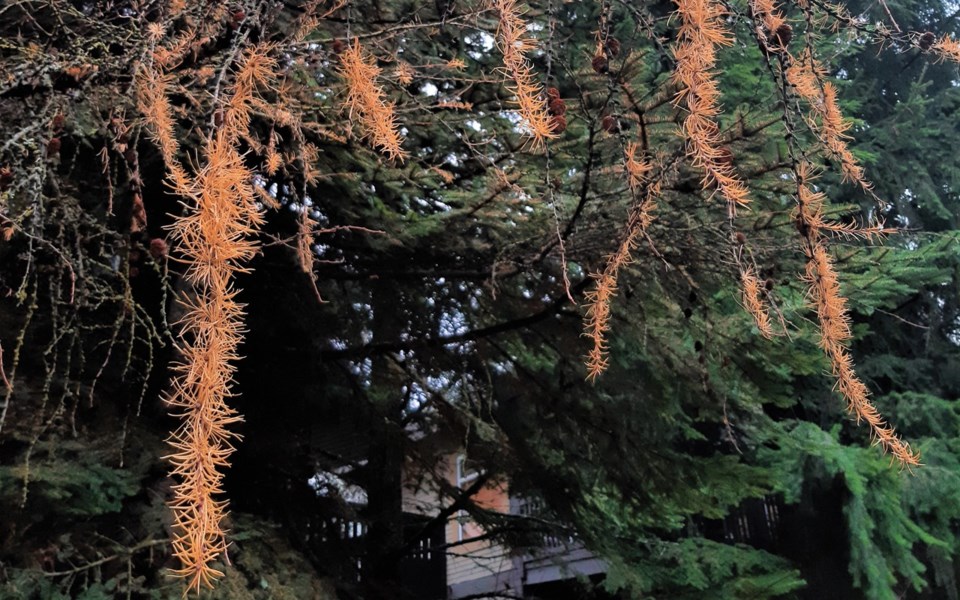on a spur-of-the-moment trip last year, I saw the ravages mountain pine beetles have caused in the lush forests near Jasper National Park. Since the 1990s, this wood-boring insect has attacked nearly 50 per cent of the total volume of commercial lodgepole pine in British Columbia. Although the beetle is native to parts of British Columbia, recent warm, dry summers and milder winters have helped expand its range into new territories in northern B.C. and Alberta.
Within just a few weeks, mountain pine beetles and the fungi they introduce can kill their host tree. Driving through Alberta, you can see large swaths of dead, grey and brown forest—a tell-tale sign of beetle infestation.
When I was driving back from Jasper, I found myself sensitized to the sight of browning conifers in a way I hadn't been before. On a wander through Whistler last fall, this heightened awareness brought my attention to a peculiar tree—a conifer that seemed to be turning yellow and losing its needles.
Filled with concern, I took to Google to search for the beginning signs of pine-beetle damage, when I discovered that this golden display was thanks to the natural rhythms of a deciduous conifer, namely, the western larch (Larix occidentalis). While these trees are not native to the Whistler area, L. occidentalis and its relatives subalpine larch (L. lyalli) and tamarack (L. laricina) can be found in patches of B.C. and are favoured by some landscapers and other garden lovers as a joining of two worlds.
There are approximately 20 known species of deciduous conifers across the globe. These trees have bunches of 15 to 40 needle-shaped leaves that protrude from woody nubs on branches. These needles are generally softer than the coniferous cousins they resemble in the summer months, but they change colours in the fall and lose their needles every year like deciduous trees. The young buds and twigs of some species of larch are covered in a fine, woolly hair that protects the trees' tender shoots from harsh weather. As the tree grows, the hairs on the older sections eventually turn black, not needing the extra fuzz for protection. Soft spring needles are interspersed with cones in the spring and summer, some species showing a bright-red cone, others a dazzling purple.
Larches are a pioneer species, a hardy group that are the first to colonize once-biodiverse sites that have been disrupted by events such as a forest fires or floods. Besides their beautiful butter-yellow to bronze displays in fall, certain types of larch are highly valued for their tough, waterproof, and durable qualities. They're also quite long-lived. Manning Park contains some of the oldest living trees in Canada—granddaddy larches at over 1,900 years old.
I'm always interested in the uses for wild species, and apparently the young twigs make a tasty survival soup, though I have yet to try the delicacy myself. Keep your eyes out for this golden wonder in the fall—there are a few planted around town, though the favoured places to spot these beauties are in Manning Park and around Moraine Lake.
Naturespeak is prepared by the Whistler Naturalists. To learn more about Whistler's natural world, go to Whistlernaturalists.ca




